Are you looking to choose between Xplornet vs Starlink? If yes, you have stumbled upon the perfect page.
Living in remote areas can often mean not being able to access reliable Internet.
However, with the rise of new satellite internet providers like Xplornet vs Starlink, high-speed Internet is now available in every community.
When I started researching better internet options for my home office, two names kept popping up: Xplornet vs Starlink.
Both promised high-speed internet and wide coverage, but they catered to different needs and budgets.
Living in a rural area, my primary concern was a stable connection that could handle both my work requirements and my family’s streaming needs.
Xplornet, with its established presence, offered various plans with different speeds and data caps.
On the other hand, Starlink, powered by SpaceX’s satellite technology, promised faster speeds and lower latency without any data limits.
I spent several weeks reading reviews, comparing costs, and checking service availability in my area.
It was crucial to make a choice that would not only fit my budget but also provide reliable service without frequent disruptions.
After careful consideration and a final tally of pros and cons, I made my decision.
Table of Contents
Xplornet vs Starlink: A Quick Overview
Xplornet vs Starlink are both internet service providers that serve people in remote regions. However, their areas of operation and network type differ.
Xplornet provides satellite and fixed wireless internet in rural Canada, while Starlink offers Internet in rural areas of many countries worldwide, including the United States.
Who Is Xplornet?
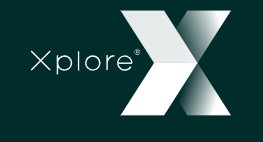
Xplornet or Xplore Inc. is a telecommunication industry headquartered in Woodstock, New Brunswick, Canada.
It was founded in 2004 as Barrett Enterprises. In 2011, it was renamed Xplornet Communications Inc.
It was again renamed from Xplornet Communications Inc. to Xplore Inc. in September 2022.
The company offers fixed wireless and satellite Internet along with mobile services across Canada.
Who Is Starlink

Starlink is a satellite internet service owned and operated by Starlink Services, LLC, a subsidiary of Elon Musk’s aerospace company, SpaceX.
In 2019, it launched its first constellation of 60 satellites to provide internet service in rural and remote areas.
Currently, it serves satellite internet to around 60 countries worldwide.
Xplornet vs Starlink: Plan And Pricing

Xplornet vs Starlink offers many plans with different data allowances and speeds that are suitable for people in various locations with varying needs.
Xplornet is generally known for lower plan prices, while Starlink is known for costly plans.
Let’s see the details for both of these providers.
Xplornet Plans And Pricing
Xplornet offers a variety of plans for satellite and fixed Internet, with speeds starting at 25 Mbps.
They offer unlimited fixed wireless plans without data caps and satellite internet plans with certain limits. If you exceed this limit, the data speed is reduced.
Here are the details of Xplornet plans.
| Plans | Price (monthly) | Benefits |
| LTE 25 Unlimited | 50 CAD | Unlimited data at 25Mbps download speed |
| LTE 50 Unlimited | 60 CAD | Unlimited data at 50Mbps download speed |
| Satellite 250 | 80 CAD (for the first year, then 110 CAD afterward) | 250 GB monthly data at 25 Mbps speed Data throttles after this limit |
| Satellite 350 | 80 CAD (for the first year, then 120 CAD afterward) | 350 GB monthly data at 25 Mbps speed Data throttles after this limit |
The above plan prices do not include installation and equipment costs, which start at 50 CAD. Also, note that Xplornet offers a wide range of other plans depending on your location.
This means the plan you get will be based on your region. Therefore, it is recommended to check the plan availability on the Xplornet website.
Starlink Plans And Pricing
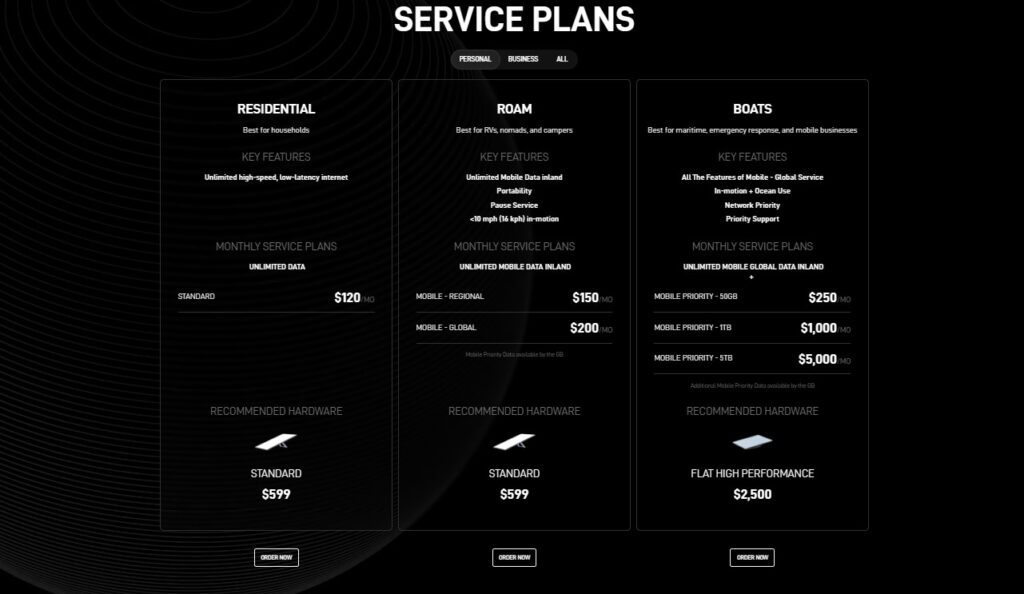
Starlink offers three types of satellite internet plans, including residential, roaming, and business, suitable for different needs.
As the name suggests, Residential is suitable for home internet, while the Roam plans are suitable for campers and nomads using the Internet on their RVs.
The business plan is meant for business, maritime, and emergency response services.
Here are the Starlink internet plans for different needs, with their starting costs.
| Plan | Price | Equipment fee |
Download Speed |
| Starlink Standard | $120.00/mo. | $599.00 | 20–100Mbps |
| Starlink Priority | $140.00–$500.00/mo. | $599.00–$2,500 | 40–220Mbps |
| Starlink Mobile | $150.00–$250.00/mo. | $599.00 | 5–50Mbps |
| Starlink Mobile Priority | $250.00–$5,000.00/mo. | $2,500.00 |
40–220Mbps
|
Xplornet vs Starlink: Installation And Equipment Charge
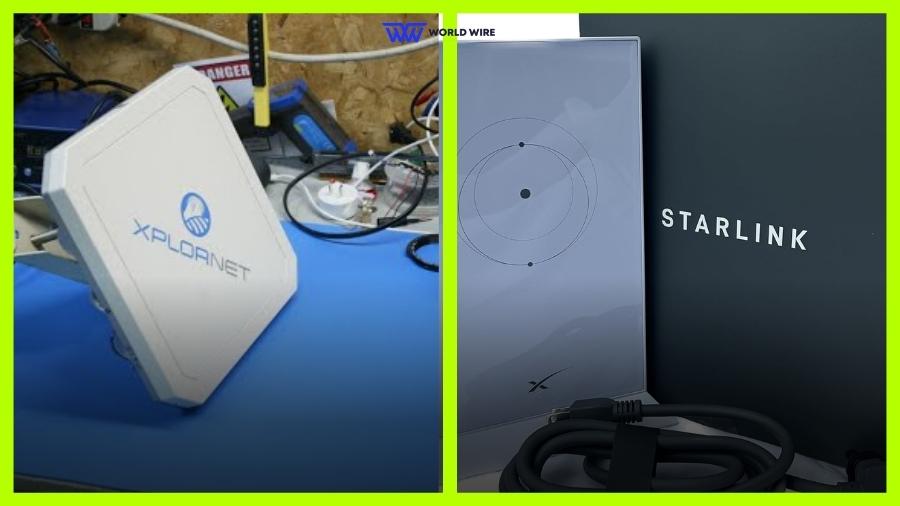
Xplornet’s plans include equipment rental, so you don’t have to buy it upfront. You also get free rental of satellite dishes and routers.
You don’t own them, but you get them for free as long as you stay subscribed to the service.
In contrast, Starlink requires purchasing the equipment kit upfront when you subscribe to its internet service.
You will have to pay the upfront cost for the Starlink dish and router, and then you own the equipment once you purchase it.
There are two options: a Standard Kit at $599 and a Flat High-Performance Kit at $2,500, suited for businesses needing high performance.
Starlink offers a 30-day guarantee, during which you can cancel your subscription, return the equipment, and receive a full refund.
Xplornet requires professional installation, which can cost you $59 to $99, depending on the setup.
Meanwhile, Starlink offers self-installation by providing a kit and installation manual.
You can set up Starlink yourself using the manual provided, such as Starlink Telescoping pole installation, or have professional installation if you prefer not to do it yourself.
Xplornet vs Starlink: Coverage Comparison
The coverage difference between Xplornet vs Starlink is the most important aspect to consider when deciding whether to use their services.
Regarding the same, Xplornet covers all of Canada, but availability depends on your address.
You can check whether Xplornet provides its services at your address on the Xplornet coverage map available on its website:
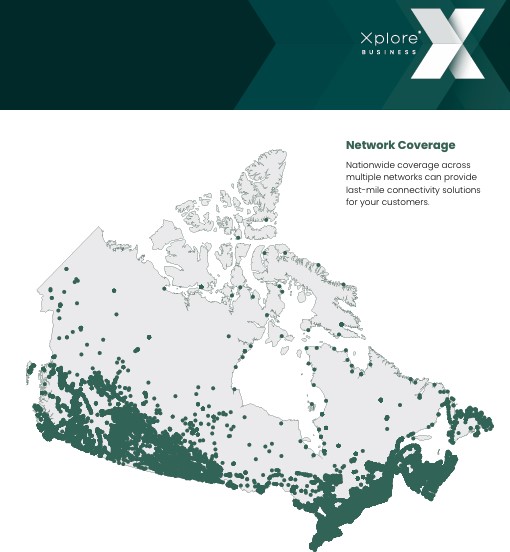
Starlink provides services across Canada and North America, reaching every remote location.
Also, its coverage is expanding as it constantly launches more satellites.
You can check the Starlink coverage map at your address on its website.
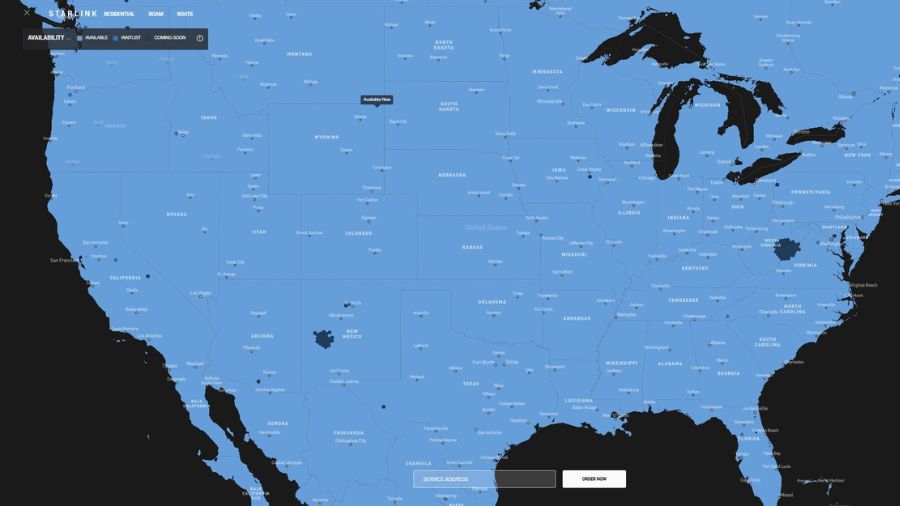
In conclusion, Starlink wins for wider and more coverage as it offers services throughout North America.
Xplornet vs Starlink: Internet Speed And Latency
It is important to learn about the internet speed offered by service providers to determine whether you can carry out your favorite activities with their connection.
Among these two, Starlink offers faster download speed, ranging between 25 and 220 Mbps.
Most places experience Starlink internet speeds of above 100 Mbps, which is enough for streaming, browsing, gaming, and video conferencing.
In comparison, Xplornet satellite plans offer a maximum download speed between 25 Mbps and 50 Mbps, with maximum areas receiving 25 Mbps, which is quite lower than Starlink’s speed.
Besides speed, latency is another important deciding factor for these internet providers.
It refers to the delay experienced when data travels from one point on a network to another. In simpler terms, it is the time taken for something to happen after you initiate it.
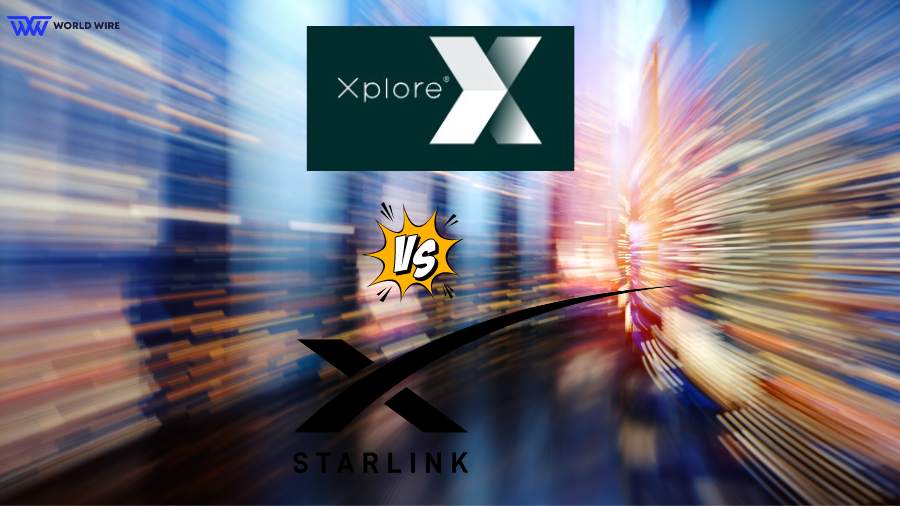
Lower latency is crucial for real-time use in areas such as gaming, video conferencing, and video streaming.
Concerning latency, again, Starlink is the winner, offering lower latency internet that is beneficial for real-time applications.
It uses a constellation of low-Earth orbit (LEO) satellites, which are much closer to Earth at an altitude of around 1200 miles (2000 kilometers).
The lower distance means lower latency and faster internet speeds for Starlink users.
In contrast, Xplornet uses geostationary orbit (GEO) satellites. These are farther in space, at an altitude of about 22,236 miles (35,786 kilometers).
Because of this distance, the signal takes a longer time to travel, resulting in higher latency (slower response time) for Xplornet Internet.
Xplornet vs Starlink: Customer Service And Support
Xplornet offers to reach its customer service in many ways. You can contact its customer care executive at 1-866-841-6001 or email your queries to [email protected].
Also, you can use the MyXplore app to get assistance from customer care support.
Starlink offers online support through its Starlink Support Page.
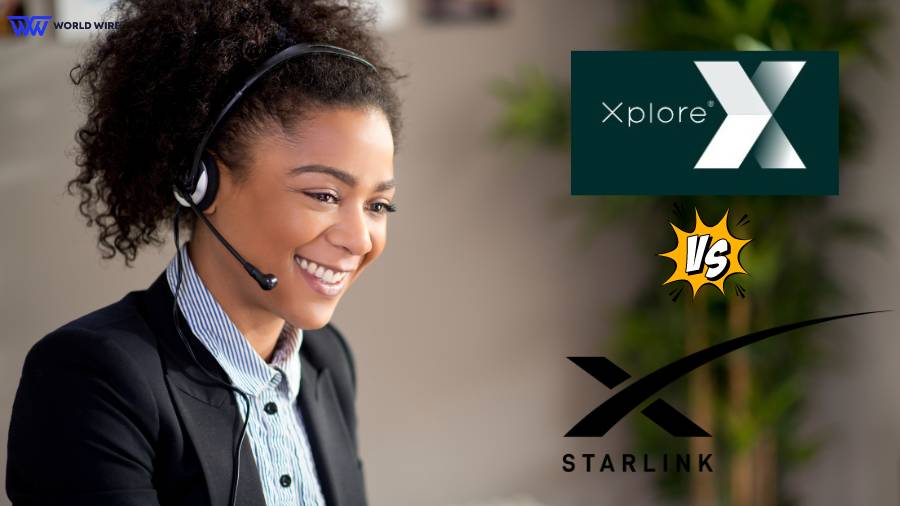
You can find a solution through the FAQs on its support page. If you can not find one for your issue, you can create a support ticket reporting your problem.
The Starlink support team will respond via message or by calling the phone number on your account.
Regarding their services, both Xplornet vs Starlink have received mixed reviews for their customer support, with some appreciating their services and others reporting long waiting times getting responses.
Xplornet vs Starlink: Pros And Cons
Knowing the pros and cons of Xplornet vs Starlink is important if you live in a rural area where internet options are limited.
Knowledge of both providers’ strengths and weaknesses will enable you to choose the service that best suits your needs and will help you avoid being stuck with a service that does not meet your expectations.
Xplornet Pros And Cons
The table below describes the pros and cons of Xplornet.
| Pros | Cons |
| Xplornet offers fixed and satellite internet services to remote locations where other internet services, such as cable and fiber optic, are not available. |
Xplornet offers higher latency than a few other satellite internet services, which can affect gaming or other data-intensive activities.
|
| Xplornet offers affordable internet plans and equipment, which is especially beneficial for low-income people. |
Xplornet plans have a data cap, which limits how much data you can use each month. Exceeding this limit can result in throttling (slowed speed).
|
| Xplornet offers multiple options to reach its customer service, including phone calls, emails, or chats. This is helpful when you need assistance related to its service. |
Due to its use of GEO satellites, Xplornet’s signals can be affected by bad weather, leading to slowdowns or outages during heavy rain, snow, or wind.
|
| Offers a range of services that cater to different needs, including business and residential internet plans. |
Xplornet offers a 25 Mbps to 50 Mbps internet speed, which is comparatively lower than that of other satellite internet service providers.
|
Starlink Pros And Cons
Here are the key advantages and disadvantages of Starlink Internet.
| Pros | Cons |
| Starlink offers download speeds ranging from 25 to 220 Mbps, faster than some other satellite internet providers. |
Starlink is known to offer expensive plans and equipment. Also, it requires upfront equipment payment, and monthly subscription fees can be higher than other internet options in some areas.
|
| Due to lower satellite orbits, Starlink has lower latency, which is beneficial for real-time applications like gaming and video conferencing. |
The Starlink dish requires a clear view of the sky, and obstructions like trees can affect signal strength.
|
| Starlink satellite internet has great coverage and is available in almost all parts of the country and many other countries worldwide. |
It requires consistent maintenance to ensure clear exposure to the sky, which adds to user responsibilities.
|
| Starlink offers unlimited data without data caps, allowing you to access the Internet without worrying about exceeding the limit. |
Weather conditions like heavy rain or snow can occasionally disrupt the connection, affecting reliability.
|
| The Starlink dish is self-installable and requires no professional installation. Overall, it offers an easy setup. |
Although easy to set up, the initial positioning and adjustments to optimize the signal can be challenging for some users.
|
Xplornet vs Starlink: Final Verdict
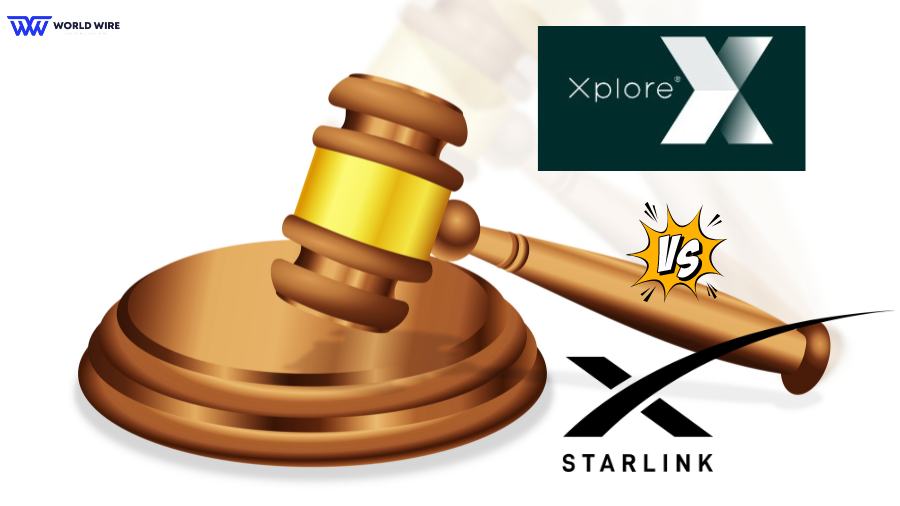
The final decision between Xplornet vs Starlink entirely depends on your priorities.
Several factors can help you choose between them. First, check for service availability for both providers in your location.
Then, consider how you use the Internet and how important speed and data caps are for your needs.
To help you a little, we can summarize the details of both providers below based on the above discussion.
- Affordability: Xplornet plans are generally cheaper than Starlink, making them reasonable for budget-conscious people.
- Speed: Starlink boasts faster download speeds than Xplornet, up to 220 Mbps, compared to Xplorenet’s 50 Mbps.
- Availability: Starlink is currently more widely available than Xplornet, as it serves all over North America.
- Customer support: Xplornet offers more options to reach its customer support compared to Starlink.
- Latency: Starlink has lower latency than Xplornet, which makes it a good choice for real-time applications like online gaming and video conferencing.
- Reliability: Starlink’s low-earth orbit satellites offer more reliable and consistent service compared to Xplornet’s geostationary satellites, which are affected by bad weather.
In conclusion, you can choose Xplornet if you want affordable plans and a slower speed, which is not a problem for you.
Otherwise, you can go with Starlink if you prioritize speed, low latency, and unlimited data, even if it means paying higher prices and equipment charges.
Frequently Asked Questions
What is satellite internet?
Satellite internet is a way to get internet access using satellites in space instead of cables or fiber optic lines on the ground.
It works by sending signals between a dish installed at your home and the satellites orbiting Earth.
Satellite internet is a good option for people in remote areas where cable or fiber optic internet is not available.
Many network providers, such as Starlink and Viasat, operate in this field to provide satellite internet in remote areas of the world.
How does Xplornet vs Starlink provide its services?
Xplornet offers fixed wireless and satellite Internet, while Starlink offers only satellite Internet. However, they take different approaches to satellite Internet.
Xplornet uses geostationary orbit (GEO) satellites, which are much farther out in space. In contrast, Starlink uses a constellation of low-earth orbit (LEO) satellites, which are much closer to Earth.
Are there data caps for Xplornet vs Starlink plans?
In the case of Xplornet, there are plans with data caps. However, it is better to check the availability of a specific plan for your address on its website or by contacting the provider directly.
Starlink offers unlimited data without hard data caps. This means you won’t be completely cut off from your service, but your internet speed will be reduced when you use more than the allotted data in a plan.
How reliable are Xplornet and Starlink during bad weather?
Xplornet uses geostationary (GEO) satellites. Therefore, bad weather conditions, such as heavy rain, snow, and thick clouds, can significantly impact the signal quality, leading to slower speeds, outages, or complete signal loss.
In contrast, Starlink, which uses a low Earth orbit (LEO) constellation, is more tolerant to bad weather conditions and gets less affected by rain or snow.
While heavy downpours or blizzards might cause some signal disruption, it is less severe compared to GEO satellites. However, complete outages during extreme weather crises are still possible.
What types of customer support do Xplornet vs Starlink offer?
Xplornet offers multiple ways to reach its customer support. You can call the number to speak with a customer service representative. You can also email them or visit the support section on its website or App.
On the other hand, Starlink’s customer care service is focused online. It provides a support section on its website and app.
You can reach its customer care support through the Starlink app or website, where you can get troubleshooting steps, submit support tickets, and get assistance from customer representatives.





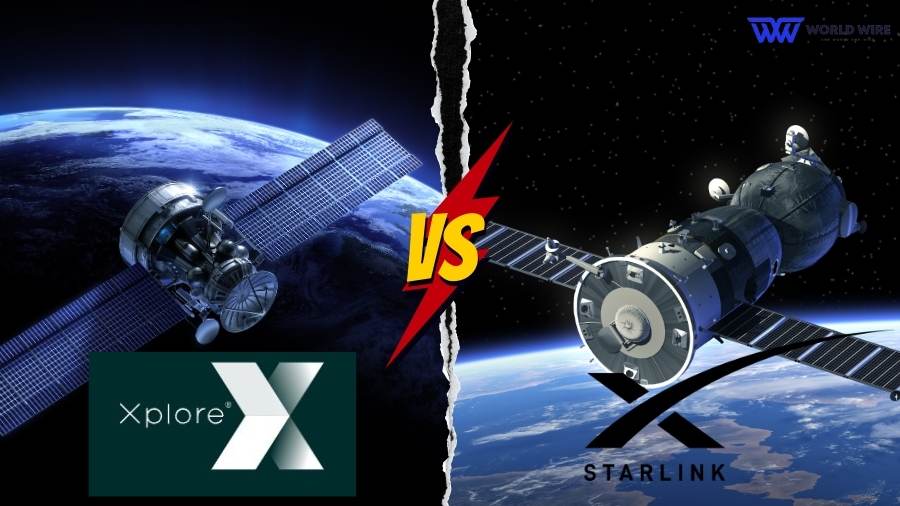

Add Comment